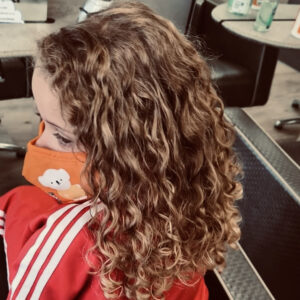
As hairdressers and barbers begin to open up again after the Covid-19 restrictions, many children, parents and carers may be finding themselves feeling anxious about the first time back.
Having your haircut can be difficult for lots of different reasons, if you have Sensory Processing Difficulties –
- It involves lots of light unpredictable touch, and hair falling on your face and body
- It demands sitting still, sometimes for quite long periods of time
- It requires someone being very close to you (probably someone you don’t know well), and bringing lots of objects close to your face and eyes
- There are lots of unpredictable sounds, and chairs that move and wobble
- There are lots of textures and sensations – water, hairdryers, combing, scissors, clippers
- We often need to change our head position, or have it manipulated which can feel scary or unsafe
Basically, it is a concoction of sensory demands, and it’s no wonder it can be challenging! Here are some general tips that might help when supporting your child to have their hair cut;
Sensory Tip 1: Find The Right Person
We need a social connection with those around us to feel safe. As parents/ carers, you can support this during a haircut, but it can be so helpful if you can find the ‘right’ person who is able to be playful, yet predictable and safe for your child.
Sensory Tip 2: Think About the Timing
Visiting the hairdressers right at the beginning or the end of the day may offer a quieter or calmer session, which might be helpful for your child.
Also, think about what time of day might fit best for your child. Does later in the day provide more opportunity for preparation? Or do you notice their thresholds and tolerance for sensory input is lowered as the day progresses?
Completing activities which are rich in Proprioceptive sensory input are hugely beneficial in supporting a calm and alert state; this puts your child in the best place to be able to tolerate disorganising sensory experiences such as haircuts. You can take a look at a range of ways you can provide Proprioceptive sensory input on our Resources Page, and on our Home Proprioceptive Activities post.
Sensory Tip 3: Think About the Place
It might be helpful to have practice visits to the hairdresser to sit in the specific chair that your child will be sitting in, to build familiarity. Some hairdressers are specially for children (some are even specific for children with Autism, for example), and they may have themed areas such as sitting in ‘cars’ which could be a big help!
Sensory Tip 4: Regulating During the Haircut
Activities which might be calming during the haircut could include;
- Having a weighted toy or pillow on their lap (provides calming deep tactile pressure)
- Having something to squeeze, pull or stretch – like a ‘Stretch Armstrong’, or rubber fiddle toy (provides calming proprioception)
- Depending on the chair, sitting on a wedge to help your child to stay active in their sitting position and feel more secure (provides postural support)
- Trying to ensure your child’s feet can touch the floor to feel safe (provides postural stability)
- Having something to (safely) chew or suck on, such as a lollipop, an ice pop, or crunchy vegetable sticks, or a chewy toy (provides calming proprioception)
- Taking short breaks and having chance to move around might be helpful to break down a long haircut, perhaps with the use of a visual timer so your child knows when a break is coming! (provides opportunity for self-regulation without becoming overwhelmed)
Sensory Tip 5: Questions You Could Ask the Hairdresser
Could the hairdresser adjust the environment at all? Perhaps dim any bright lights, or maybe even cover the mirror if it is overstimulating for your child. Some children might like to feel the scissors or a clippers before it is brought close to their head/ ears/ face (safely of course!). You could also advise the hairdresser that firm, predictable touch is more organising than light, unpredictable touch. Therefore firmly touching their head or shoulders and firmly brushing off falling hair (rather than using a brush or lighter movements) might be helpful.
Sensory Tip 6: Recovery
Think about what sensory activities are fun and regulating for your child, and provide opportunity for them to access them as soon as possible after their haircut so that their memory of the event is as positive as possible. It might be helpful to pay in advance, for example, so you don’t have to wait around afterwards to organise payment.
If you have any other tips, please do let us know!
